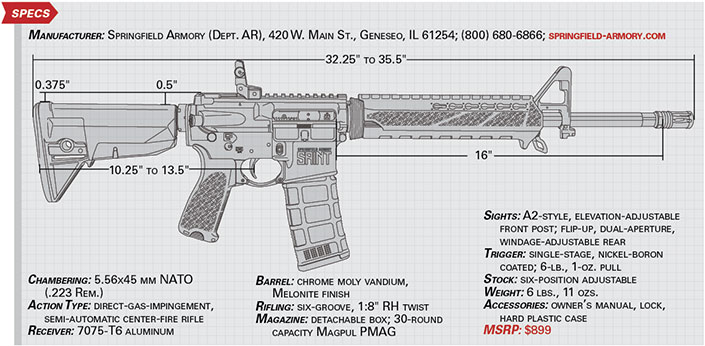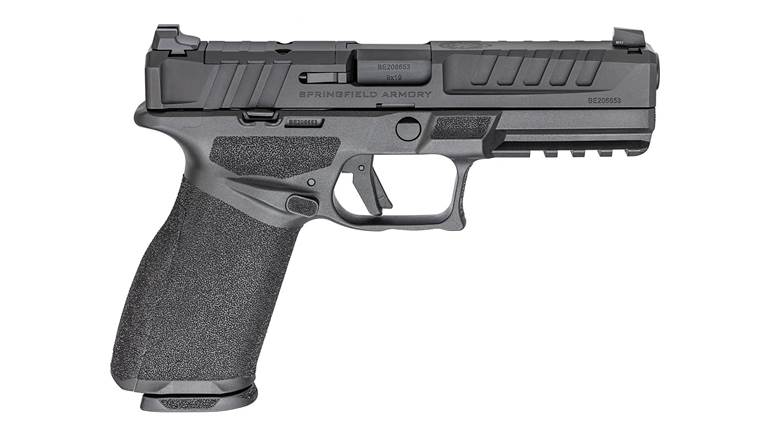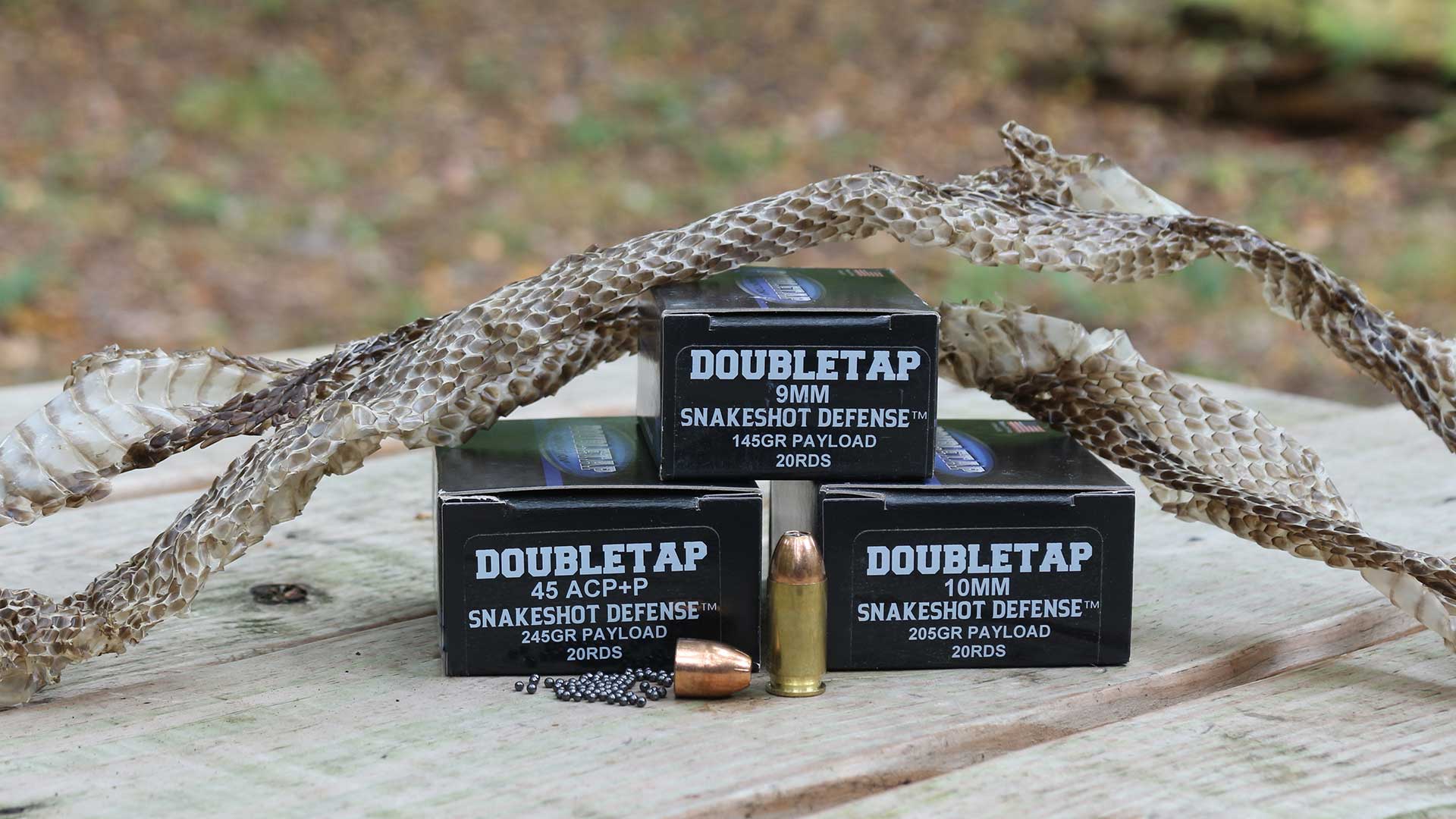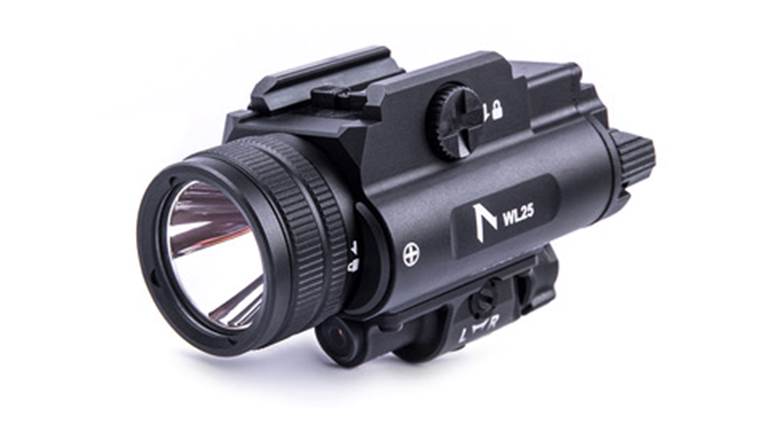
For the first time, an AR-15-style carbine is wearing Springfield Armory’s iconic insignia of crossed cannons and flaming bomb. For some, the Saint may be a long-overdue addition to the company’s catalog of M1A rifles, M1911-style pistols and the extensive XD line of polymer-framed handguns. Others may wonder why Springfield would bother to enter a market seemingly awash in M4-style semi-automatic rifles. To the former, I’d say better late than never. Having spent considerable time behind the trigger of AR-style rifles, both military and commercial models as a soldier and armed citizen, I’d contend that the Saint is smartly designed and priced to sell, making it a firearm worth waiting for. To the latter group, remember that even now, in the golden age of ARs, with more makes and models available to consumers than ever before, such rifles continue to sell at breakneck pace. The entrance of a major gun manufacturer into such a competitive and insatiable market is only good news for American consumers.
Still, one might wonder, why now? In speaking to Springfield Armory’s chief operating officer, Dennis Reese, I learned that building an AR-15 has been among his ambitions since the mid-1990s. But it was only in the past two or three years that the company got serious about making that ambition a reality. As for the crowded marketplace and the company’s belated entrance, Reese had this to say, “We at Springfield believe the AR-15 platform is not oversaturated in the market and will have a very bright future for decades to come. Springfield is determined to be part of that future.” In talking about the new rifle and its future, he continued, “The Saint has such great modularity [and can be evolved] in so many ways,” emphasizing that the subject of this article is just the first product in what will likely be a full line. And like other Springfield products, consumers can expect the Saint and future offerings to exhibit high quality, offer real value and be ready to shoot right out of the box.
My next question for Springfield had to do with the new AR’s name, Saint, and company representatives had several explanations for the choice. Acknowledging that some may not understand the name, or may not agree with a religious term being applied to a firearm, Springfield contends that AR platforms, and other semi-automatic personal-defense rifles, have been unfairly characterized by politicians and the media as instruments of evil. However, we know that in the hands of law-abiding citizens, a gun’s true purpose is to protect and defend life, liberty and property. The name Saint, therefore, was chosen to evoke a sense of strength and safety, and to characterize the rifle as a tool that can be trusted and relied upon in the worst of times.

Whether or not the name has the desired impact, the Saint’s introduction has led to a noticeable change in Springfield Armory’s advertising strategy of late, a change that you have probably witnessed in these very pages. The slogan “Defend Your Legacy” is writ large, and much of the supporting images and online videos reflect the newest generation of gun owners and the growing population of female shooters—a group characterized as “youthful, aspirational and unapologetic.” To learn more about the new focus, I spoke with Reese’s daughter, Stefany, the company’s social media coordinator, about legacy, and what it means to her. There are some obvious answers such as material wealth, contributions to an industry, or memories and wisdom passed down to family. But Reese and I agreed that for people of our generation—in their late 20s and early 30s—legacy is something yet to be built. Many of our peers are just hitting their stride professionally and may not be settled into any kind of traditional family life. It’s hard to think about legacy, let alone defend it, before you’ve really had a chance to establish one. We see our parents and grandparents, and the things they’ve done and the things they’ll leave behind, and we understand their legacy, indeed we are part of it. But for us, legacy is more about the promise of the future, and defending it means maintaining our freedom to build something worth passing on. Reese made a great point when she talked about women, particularly young women, who are adventurers, mothers, professionals and all-of-the-above, and how many are just starting to ask the question, “How will I defend myself?” And for those, the Saint is Springfield’s answer.
At first blush, the Saint is a handsome carbine, if not particularly distinct from other offerings in the AR-15/M4 category. It is a direct-gas, semi-automatic center-fire rifle chambered for 5.56x45 mm NATO (.223 Rem.). It operates on a mid-length gas system and feeds from an AR-style detachable-box magazine. To say this pattern has been followed before would be an understatement. Still, Springfield’s designers paid attention to the small details that matter and made good decisions with regard to the Saint’s construction and features, resulting in a carbine that is more than the sum of its parts.
At the heart of any rifle is its barrel. The Saint sports a 16" chrome moly vanadium barrel in the A2- or Government-style contour, sans M203 cut, rifled with a 1:8" right-hand twist and capped by a birdcage-style flash hider. It’s a handy and versatile design that provides the shortest possible overall length (non-SBR) and rifling that will stabilize a wide range of bullets from 55 to 77 grs. in weight. Rather than chrome lining the barrel to increase longevity, Springfield made the decision to use a nitriding process called Melonite, inside and out—chamber, bore and external surfaces—greatly improving the hardness and durability of treated metal surfaces without adding a layer of material as does chrome lining. In my opinion, this was a very savvy decision given Springfield’s experience and expertise with Melonite, which has been used for decades, and with great success, in the company’s XD line of pistols.
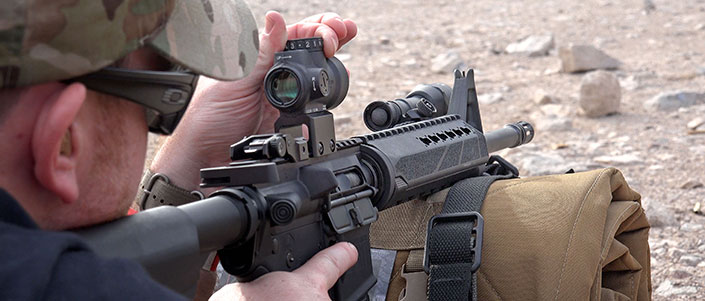
Springfield’s design team also carefully considered reliability, longevity and recoil management when configuring the rifle’s operating system. A mid-length gas system was chosen because it can be paired with a short, 16" barrel and still deliver reliable performance and less recoil than a comparable carbine-length arrangement. Gas is siphoned off the barrel at the forward-mounted gas block and channeled back into the gas key of the bolt carrier group to power the bolt’s unlocking and rearward motion. The Saint’s gas block and front sight post are combined in the familiar A2 configuration, including the bayonet lug and sling swivel. We can assume that this proven design was chosen for its utility and ease of manufacture.
The bolt carrier group itself is built on the M16 design and specifications, and is machined from Carpenter 158 steel. Heavier and more robust than AR-15-style groups, the mil-spec M16 bolt carrier group is renowned for its durability, and Springfield applied a dry lubricant to further enhance performance and longevity. Just behind the bolt carrier is the buffer and buffer spring. The assembly is designed to catch the bolt carrier group, arrest its rearward movement and force it forward again to pick up a fresh round before locking into battery. The buffer is critical to reliable cycling, and as the AR platform has been adapted—such as for new chamberings or use with suppressors—buffers of various weights have been introduced to help regulate a gun’s timing and optimize its performance. The Saint uses a heavy “H” tungsten buffer, which is not only a complementary choice to the gun’s 5.56 mm NATO chambering and mid-length gas system, it also pairs nicely with the heavy bolt carrier group, and the combined weight of those components is effective in dampening felt recoil.

The final primary component for the Saint’s firing sequence is the gun’s trigger group. The challenge here for Springfield’s designers, as set forth by Dennis Reese, was to design the best possible trigger system using the conventional G.I. single-stage trigger arrangement. The team’s solution was to enhance the G.I. trigger group by applying a nickel boron coating to all components and micro-polishing the engagement surfaces. The result is an exceptionally smooth trigger pull—especially for a production-grade AR—with no take-up or overtravel, and a relatively short reset, clearly denoted by tactile and audible cues, for fast follow-up shots. My testing has included three different Saint rifles, and each has had a trigger pull in the 5-lb., 8-oz., to 6-lb., 8-oz. range. The average of 10 trigger pulls for the primary test rifle yielded an average pull weight of 6 lbs., 1 oz.
Though much of the Saint follows the well-established AR template, the new rifle does add one feature that, while not entirely new, has not been seen before in a production offering from a major manufacturer. Located behind the hammer and trigger assembly, and accessible from the bottom of the lower receiver when the pistol grip is removed, Springfield has incorporated a nylon-tipped tensioning screw that tightens the engagement between the upper and lower receivers. Dubbed the Accu-Tite system by Springfield, the screw can be raised with an 1/8" Allen wrench to apply upward pressure on the upper receiver’s rear takedown pin lug, effectively eliminating the shake, rattle and roll common to mil-spec ARs. It can, in theory, also improve performance in the same way tight slide-to-frame fitting improves the accuracy of an M1911. However, it should be noted that over-tightening will make it difficult, or impossible, to remove the takedown pin by hand. I’ve found that after tightening the screw, hand tight, to snug up the receivers, a 1/4-turn back out results in a rattle-free Saint that can still be disassembled. Time will tell if the system is effective enough to warrant widespread acceptance, but it’s nice to see innovation and creative thinking within such a well-established category. Other controls are typical of the class, both in function and location: two-position radial safety (left-side only), magazine release, G.I.-style charging handle, forward assist and bolt catch/release.
Much like the gun’s internals, the Saint’s exterior components and appearance are familiar, but the assembly as a whole offers real utility and value. The receivers are both constructed with hard-coat anodized, aircraft-grade 7075-T6 aluminum. The upper receiver features a flat top of Picatinny rail for the attachment of optics. The Saint also includes Springfield Armory’s flip-up, dual-aperture rear sight, which offers 1/2-m.o.a. windage adjustments, and pairs nicely with the F-height elevation-adjustable A2 front post. Like most AR makers, Springfield Armory manufactures some components and sources others, and the receivers fall into the latter category. It’s worth mentioning, though, that the Saint is entirely American-made, with parts coming from Springfield’s own Geneseo, Ill., factory, or other U.S. manufacturers. The receivers are made by a very well-regarded aerospace engineering and machining firm, and are built to Springfield’s specifications. While on the topic of the Saint’s manufacture, Springfield actually expanded its own facility to accommodate production of the new firearm and, one can assume, provide for future expansion of its capacity to manufacture components in-house.
One of the most distinguishing, and commonly replaced, components on any black rifle is its furniture. The term “furniture,” when referring to firearms, has undergone a bit of a transformation since the commercial AR came of age. In today’s AR lexicon, furniture refers to the buttstock, pistol grip and handguard. For the Saint, Springfield chose a single vendor for all three items, and one that AR buffs will be familiar with, Bravo Company Mfg.
The buttstock and pistol grip both come from the BCMGunfighter line, and are molded from durable, lightweight polymer. A six-position design, the stock fits over the Saint’s mil-spec buffer tube and offers approximately 3.25" of adjustment. I was impressed with how securely the buttstock locked into position; it exhibited none of the wiggle, shift or rotation commonly seen in adjustable AR stocks. A horizontal slot and bilateral QD ports are incorporated for the attachment of slings. Bravo’s BCMGunfighter Grip features a reduced angle compared to most competitive products—on par with an M1911 or XD pistol—as well as an internal storage compartment that is sealed by a hinged, water-resistant cap. Rifles in the AR-15 pattern have typically used pistol grips angled strongly to the rear, a design that is ergonomically appropriate for bladed-body shooting positions. In recent decades, however, the rise in use of individual body armor, and other considerations, have prompted military and law enforcement personnel to adopt more squared-up shooting stances, changing somewhat the AR’s manual of arms. The evolution, of course, has trickled down to civilian riflemen, so it’s nice to see that the Saint’s pistol grip was selected with ergonomics and modern shooting techniques in mind.

Both the buttstock and the pistol grip were products previously available for aftermarket purchase. The handguard, on the other hand, is a new design that Bravo Company is calling the PKMR—Poly KeyMod Rail. The handguard is a two-piece arrangement with an integrated heat shield that makes use of the AR’s traditional spring-tensioned delta ring for attachment. Interestingly, the trim, textured fore-end utilizes KeyMod attachment ports for the addition of accessories and rails. This is the first time I’ve seen KeyMod used on a polymer handguard, but in examining the assembly and speaking with Paul Buffoni, president of Bravo Company Mfg., I learned that the key-hole-shaped attachment ports are reinforced with steel inserts to prevent wear or wobble. All told, 18 KeyMod ports are available and are evenly distributed across the handguard’s 2-, 6- and 10-o’clock faces.
For testing, I affixed a short rail section and a Surefire flashlight to the front of my evaluation rifle. So far, with my total round count somewhere around 2,000, I’ve experienced no issues with the arrangement, and can report that the rail and flashlight are still snug and secure. At writing, the BCM PKMR handguard is exclusive to Springfield Armory’s Saint, but the component should be available for purchase from Bravo Company in early 2017.
Having sent thousands of rounds downrange, and witnessed thousands more fired by other evaluators, I found the Saint to be one of the most reliable rifles I’ve ever shot. I used it at short range, long range, in the sand and sun of the Las Vegas desert and the heat and humidity of Virginia. Through it all, the Saint ran reliably and delivered accurate fire. Those familiar with ARs will appreciate the way the Accu-Tite system and BCM buttstock combine to make the platform, renowned for its modularity, rock solid and rattle free. Likewise, the light overall weight—6 lbs., 11 ozs.—paired with the recoil-attenuating heavy bolt and buffer, make for a rifle that is easy to carry and enjoyable to shoot. But perhaps the Saint’s most salient feature is its price; MSRP is less than $900. At that price, Springfield has delivered a rifle that is light, trim and well-equipped—a blend of classic M4 components and critical enhancements—and one heck of a bargain for those interested in an entry- or mid-level AR.

So, legacy defended? Considering its well-regarded M1911 pistols, its class-leading M1As and the ever-evolving XD line, Springfield Armory’s reputation as a premier American gunmaker was never in danger. But in terms of offering a product that new gun owners and veteran shooters can all appreciate, the company has done a good job.
The AR-15 has long been regarded as one of the easiest rifles to learn and use effectively—it’s lightweight, light on recoil and can be very accurate. These are some of the reasons it’s been a staple for more than 50 years, and the same qualifications make it extremely well-suited for use by armed citizens of all ages, sizes and genders. The new Saint is a well-designed rendition of the trusted platform, being built by a respected manufacturer. So for those wondering, perhaps for the first time, “How will I defend myself?” Springfield Armory has your answer.
